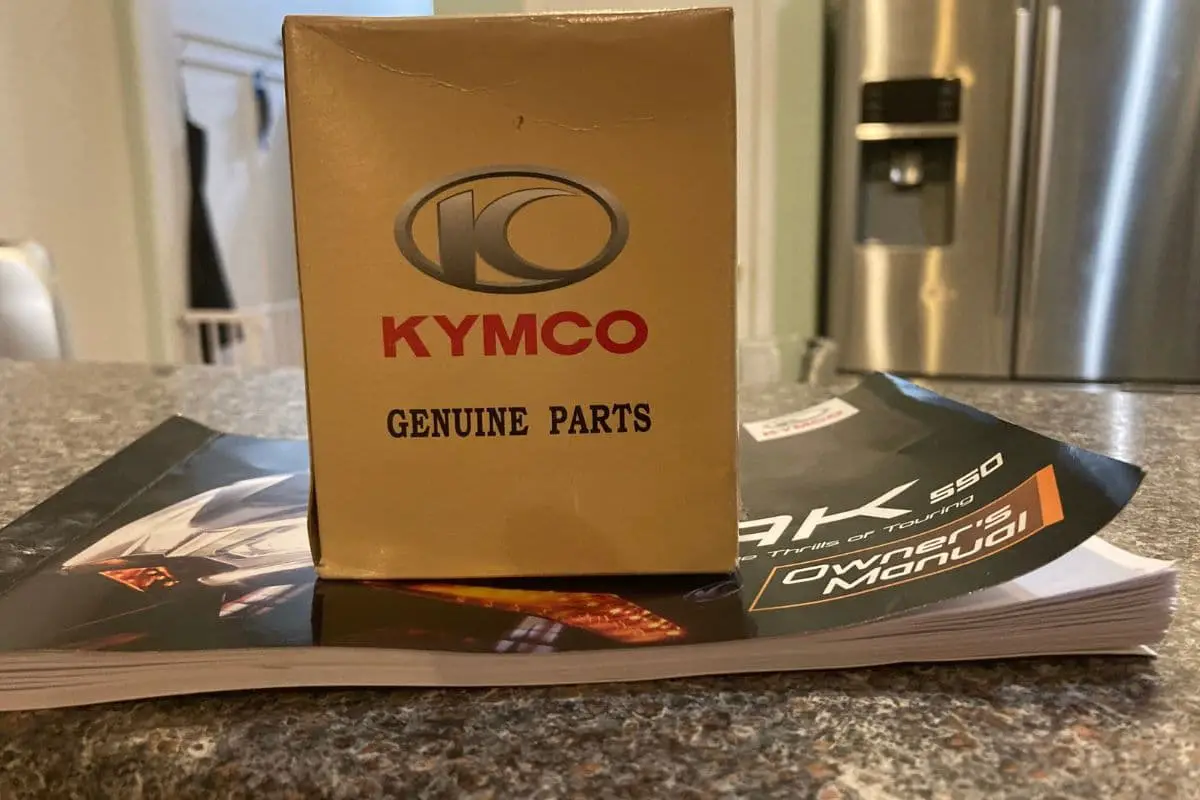As the temperature drops in the fall, there comes a point where you know you don’t want to take your scooter out for a ride. Those individual days string to weeks, and then next spring, you’ll regret having ignored your motor scooter. Winterizing your scooter doesn’t have to be hard!
Well maybe the emotional part of no scooter wind therapy for a bit…
Check out the full list of what you’ll need on Amazon to make it easier to winterize your scooter when you’re ready
What is it & Why Winterize Your Scooter?
If you don’t know what winterizing is referring to, it might surprise you to know that it is really referring to any time of year when you won’t be using your scooter.
Winterizing your scooter is a method of storing your scooter for a period of time when it is unlikely to be ridden.
Gas-powered engines do not like sitting around being unused, so winterizing a motor is common practice for periods of disuse.
Think of your lawnmower, pressure washer or snow blower. While those motors definitely have some differences, they still benefit from a ‘winterization’ when they’re out of season.
In general, winterizing your scooter prevents liquids from deteriorating your internal engine components and your battery from losing its charge permanently.
Gas can actually go stale, so those moments in shows like Walking Dead where they drive a car that’s been sitting for 2 years is so not going to happen. Gas also evaporates, and between the 2 issues, you’ve got a chemical process going on inside of your gas tank, injectors, and everywhere in between for rust and corrosion to occur.
You do not want this to happen! It’s quite difficult to fix, and it will stop you from riding when the weather does improve.
Another common thing you’re preventing is killing your battery. Most scooters use a lead-acid battery which gives a little of its power away even when not in use. When it does that, it produces some crystals on the inside. That’s all normal, and when you use your scooter, you reverse that when it happens. When you don’t use it, it just loses its ability to be used & recharge.
Those are the 2 most important things you want to avoid through winterizing. Depending on how many of the steps you choose to go through, it should also prevent the following:
- Minimize tire wear
- Protect your paint
- Protect from rust
But most importantly – you’re making it easier to hop and ride when you’re back to riding. Whether that’s in the spring or when you’re back from the elaborate vacation I imagine you’re on now.

When Should You Winterize Your Scooter?
When you should winterize your scooter is a bit of a personal decision. My husband will ride his scooter to work even if it is 40 degrees. I will not.
A good rule of thumb is to winterize your scooter when you know you will not be riding it for a few months. If you decide to wait to see about the weather in the shoulder season, I recommend winterizing when you haven’t been able to ride in 2 weeks.
If you live in a colder climate, you may want to consider doing a full winterization of your scooter by the end of November at the latest and just call it for the winter months. I tend to wait til the end of December depending on weather on the Texas gulf coast.
Just remember that you’re doing this so that you can enjoy all of the fun things you love to do during the warmer months (while your scooter is protected against the harsh winter elements).
How to Winterize Your Motor Scooter
The good news is that it really is easy. Plus you can somewhat pick and choose what you decide to do. I’ve marked the non-negotiable items with an asterisk ‘*’, but you decide what you are willing to do based on how long (or not) you actually plan to park your Vespa this season as far as the rest goes.
1. Oil change
If your oil change has less than half of its life left, go ahead & change the oil. Yes, it is a bit wasteful. However, dirty oil makes it more likely for parts to corrode while your scooter hibernates, so that fresh oil change will help protect it.
Another perk is also that you’ll be fresh and ready to ride when it is time to again.
Check your manual for your specific scooter’s needs in regards to oil weight and the oil filter, and get to changing that oil!
While motor scooter oil is easy to come across, some scooter brands or models scooters will require you to chase down an oil filter. Make sure to order one before you need it, so you’re ready.

2. Clean your scooter
This is one of those things that if you’re short on time, you could technically skip it. I do not. You can read more about washing your scooter. In general, dirt and grime that stay on your scooter can be bad for the surfaces. Think of it as marinating but in a bad way & not yummy.
I do recommend cleaning your scooter after the oil change. I don’t tend to make a mess all over the scooter when doing the maintenance, but it just feels right. Just in case.
- I like to give my scooter a thorough cleaning along with a wax.
- If you have chrome, it can be a good idea to rub a light coat of WD-40 on those bits, as well. It’s rust protection.
- A protection detailer like this 303 from Amazon or this one from Revzilla is a good idea for the plastic and vinyl parts on your scooter.
- If you have a leather seat, you can use a high-quality cleaner and conditioner to help keep it in good condition.
3. Use fuel stabilizer ***
This is the #1 thing you SHOULD NOT skip if you’re considering whether you should winterize or not. The corrosion that can happen involves more than just your fuel tank, and it can be costly!
If you have a carbureted scooter, you CAN just drain all of your fuel. It needs to be bone dry to not cause some corrosion. However, if you have an electronic fuel-injected scooter (modern scooters), then you just need to go the fuel stabilizer route.
To winterize your scooter, you will add fuel stabilizer according to manufacturer’s instructions into a full tank of fuel. Fuel stabilizer is an additive that is used in engine fuel to provide a protective layer for the fuel tank of an engine.
A little goes a long way with 4 oz treating up to 10 gallons. So while you have to spend a little, it’s well worth it! The average scooter only has a 1.7 gallon tank.
Check the prices for Sta-Bil that we use on Amazon and Revzilla.
4. Use a trickle charger for your battery ***
Standard scooter batteries actually give up some of their charge everyday – even when it isn’t being used. By using a trickle charger, it will add a charge even while in winter storage. If yours is an older one, you’ll have to monitor & put it on charge for a few hours a month. Newer battery tenders will cycle off when the right charge is reached, so it’s a little bit more of a set it & forget it during the winter season.
Otherwise, you’ll start the spring riding season with a dead battery in your moped and a little less money in your pocket.
5. Inflate your tires
Your tires may deflate over the winter, and then let’s add in the shrinkage from the cold air… All of this can lead to a flat spot on your tires.
It’s easy to prevent flat tires in the spring by simply inflating your tires to the maximum pressure (psi) that is on the sidewalls of your tires. Some scooters have a different front and rear value, so check both tire pressure requirements before actually inflating.
Some people go as far as to store their motor scooter lifted off the ground, but I don’t find it necessary.
6. Store it
The more you can protect your scooter from harsh, cold temperatures the better.
If you can park your scooter in a garage or other covered area that is protected from the more extreme weather, GREAT!
If you are unable to do park indoors, a good breathable cover like this one can help. You don’t want to trap mold and such with the cover, and I’ve heard that moisture trapped inside can soften paint. This is not something I’d risk, so a good cover is a great idea if you don’t have one.
Bonus – they can even help as part of your strategy to keep your scooter from being stolen.
If you are concerned about rodents, you may also want to plug any holes in your scooter. I’ve even heard of removing the seat and bringing it indoors to protect the fabric and cushioning from the pests.
7. Check your coolant
If you have a liquid-cooled scooter, you may just have water for the coolant. Not all coolants actually have antifreeze protection in it, so this is something you’ll want to confirm.
If your beloved scooter is stored in an un-heated garage, you can’t risk it! If you aren’t sure what kind of coolant is in it, it’s safer to just change it for the freeze protection
